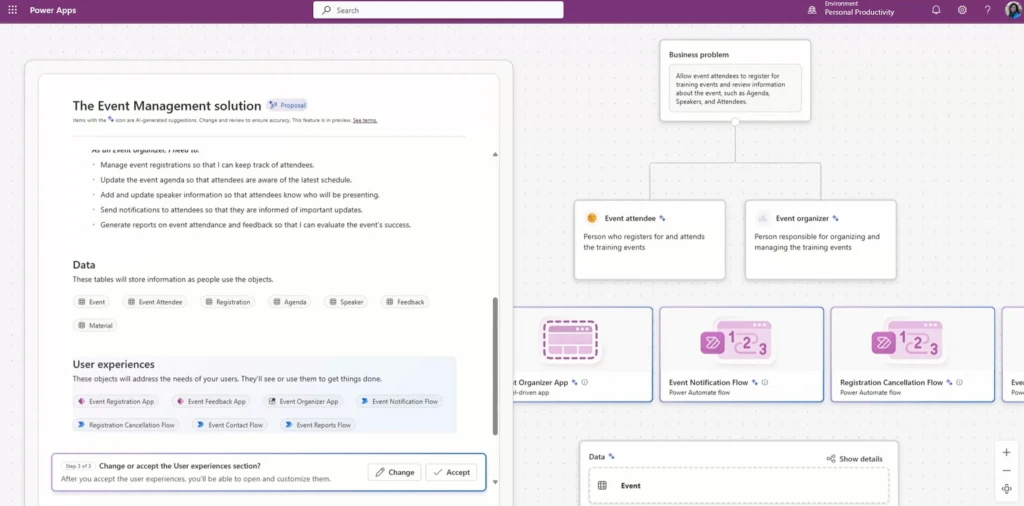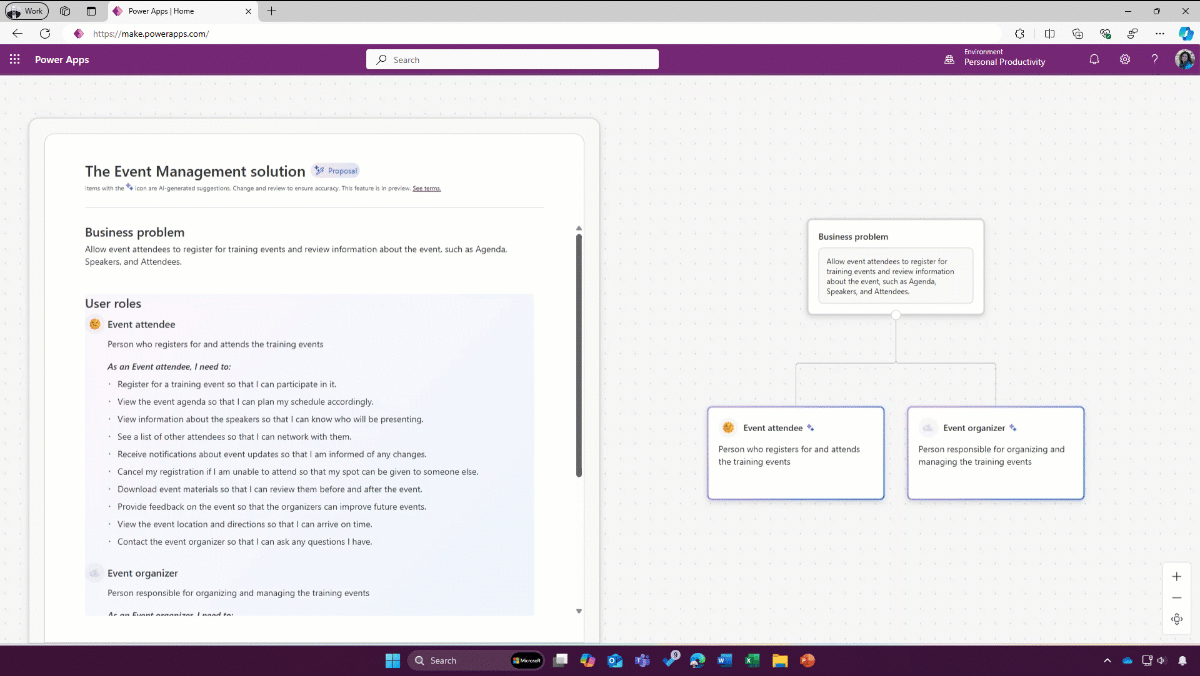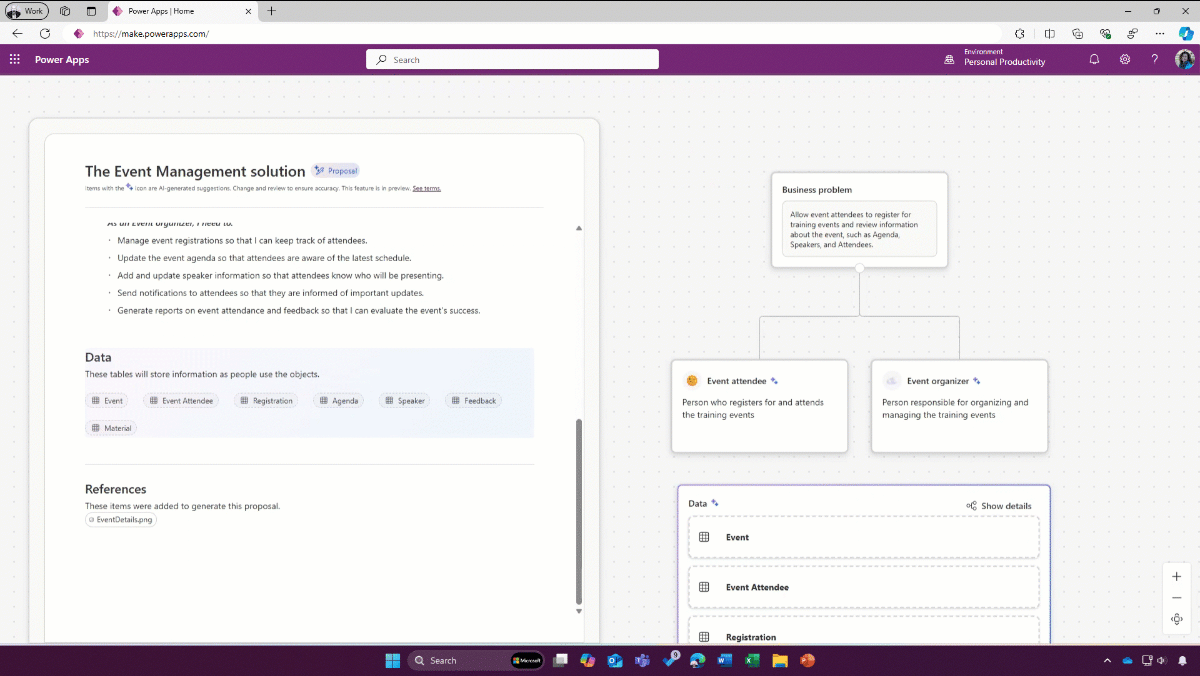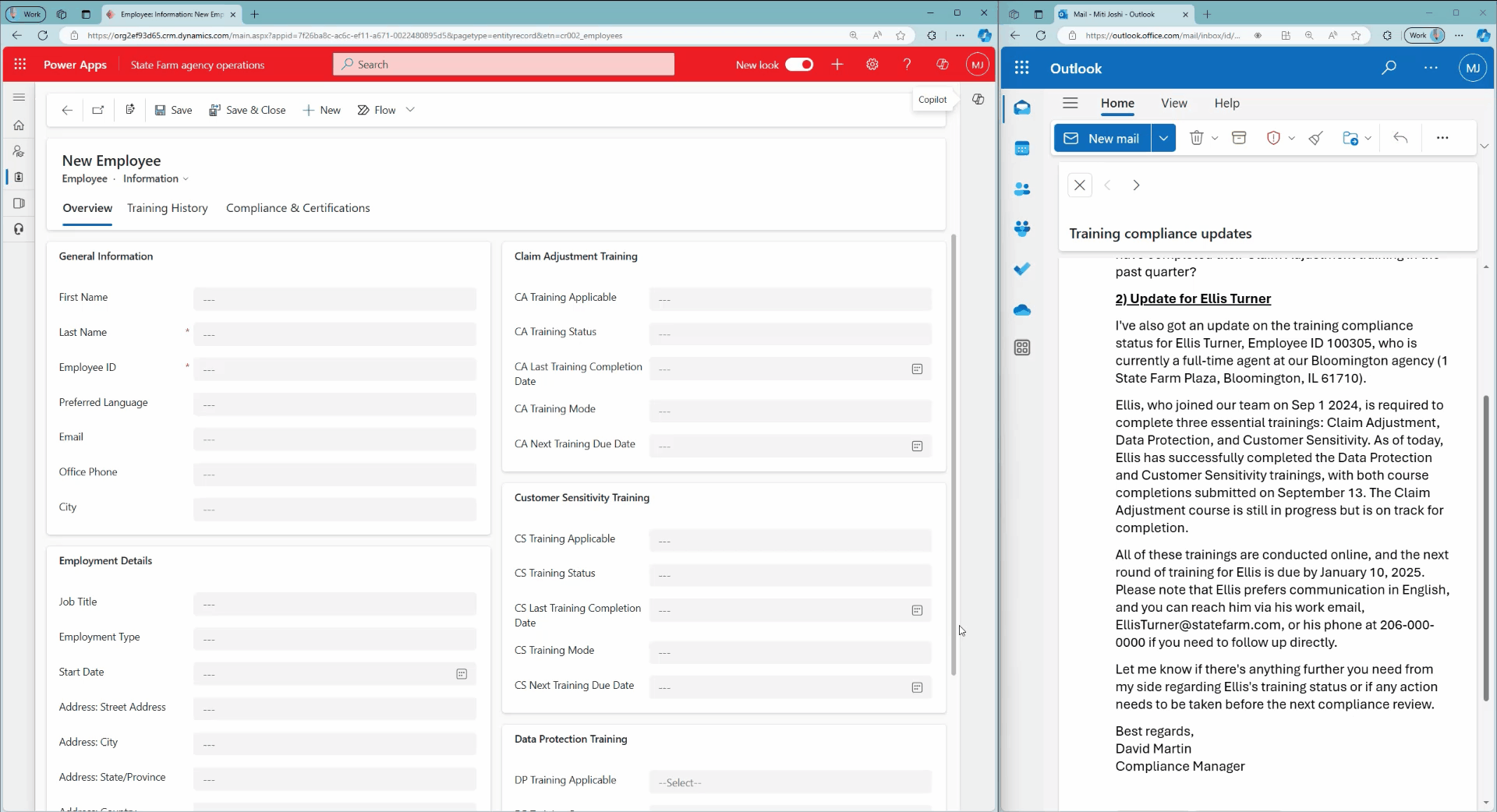
Build user-focused intelligent solutions in Power Apps, start with a plan.
This week our team has had the pleasure of spending time with our amazing community at the Power Platform Community Conference (PPCC). The energy and excitement at PPCC are unmatched, and it’s inspiring to see the creativity and passion everyone brings to the platform. As part of Charles Lamanna’s keynote we announced some exciting updates for Power Apps – we are further shaping how organizations build solutions and what solutions they built in the era of intelligent applications.
By 2026, 40% of net-new applications will be intelligent apps…[that] incorporate AI to enhance existing experiences and form new use cases
IDC FutureScape: Worldwide Developer and DevOps 2024 Predictions
Copilot will continue to bring a tremendous opportunity for developers and end users to be more productive. Power Apps will enable makers and end users with Copilot and a team of agents, each with rich domain skills across solution architecture, data modelling, and data exploration. Makers will be able to build intelligent solutions that solve business problems faster and with less effort.
Start with a plan
Great solutions don’t (usually) start in code, or by immediately designing the UI. Most experienced developers and teams start with an understanding of the problem, the users involved, and their requirements, before they even write the first line of code or draft a first app screen. We’re excited to bring the ability to build a plan to the Power Apps Studio. With this ability developers will be able to start working on the business problem in an iterative discussion with Copilot in Power Apps – they will be able to better keep connection between the business requirements and the solution they are building. This iterative and outcome focused development cycle can all happen right within Power Apps Studio.
Makers will be able to start with a description of their business problem as well as provide additional context like process diagrams, data models, or even screenshots of legacy apps. Copilot will use this input to draft user roles and requirements for the solution. From this starting point, makers can continue to add or change roles and their requirements directly or with the assistance of Copilot.

Once the team will be aligned on requirements, Power Apps will propose a data model to support the solution and allow the maker to explore and make updates through a visual entity relationship diagram (ERD).

When the maker will be ready to start building the solution components, the plan designer will recommend what types of apps and automation will fit their requirements. In the initial release of this functionality, the recommendations will include Canvas and model driven apps, and cloud flows in Power Automate.

This entire process of building a plan and generating solution components is iterative and collaborative. At any point makers are able to make changes to defined user roles, requirements, data model, or the proposed user experiences.
And this additional context and grounding isn’t available just for the creation experience – the plan will now live alongside the solution, changing with it and making sure the understanding of the problem and requirements isn’t lost. This way anyone who comes to edit the existing solutions can not only see the actual status quo, but the rationale that led to it.
From the view of suggested apps, makers can jump into app generation, see a live preview of the app for quick validation, and leverage the full power of the canvas and model driven designers to customize and continuing building the app.

Power Apps Studio is evolving to enable developers throughout the entire software development cycle, centered on the end user and their requirements. The plan designer is going to be available through Early Adopters Program, before entering public preview. You can request to join at https://aka.ms/LetsBuildaPlan – this doesn’t grant immediate access but will get you on the list as we expand to more users to engage with the product team, provide feedback, and get hands-on with the plan designer and intelligent apps.
Collaborate with Copilot and your team
While building alongside Copilot continues to improve, so does working alongside the rest of your team. We’re extremely excited to announce that Coauthoring in Power Apps is now generally available. The ability to work with a team of developers, business users, and other stakeholders in a single pane of glass brings great advantages. Especially in a world where low-code and code-first development happens in one solution.
Building apps that are intelligent from the start
This week we also announced updates for end users to easily work with data in their apps. With smart paste, instead of tediously searching for the right inputs, the end user can copy text from an e-mail or other source, let Copilot identify the right information, and map the content directly to their form. From there, users can decide what to accept or change.

Additionally, when working over a large number of records, Copilot is able to help search and filter the data for users. Instead of numerous point-and-click actions, they can use natural language to quickly filter and search through data directly on the grid.

These updates, available in Public Preview, continue to bring intelligent skills to core tasks for our end users, without the need for the developer to custom build an experience.
Request to join and become an early adopter
If you’re passionate about these updates coming for makers and end users, please join our Early Adopters Program. This doesn’t grant immediate access but will get you on the list as we expand to more users to engage with the product team, provide feedback, and get hands-on with the plan designer and intelligent apps.
You can request to join here: https://aka.ms/LetsBuildaPlan
